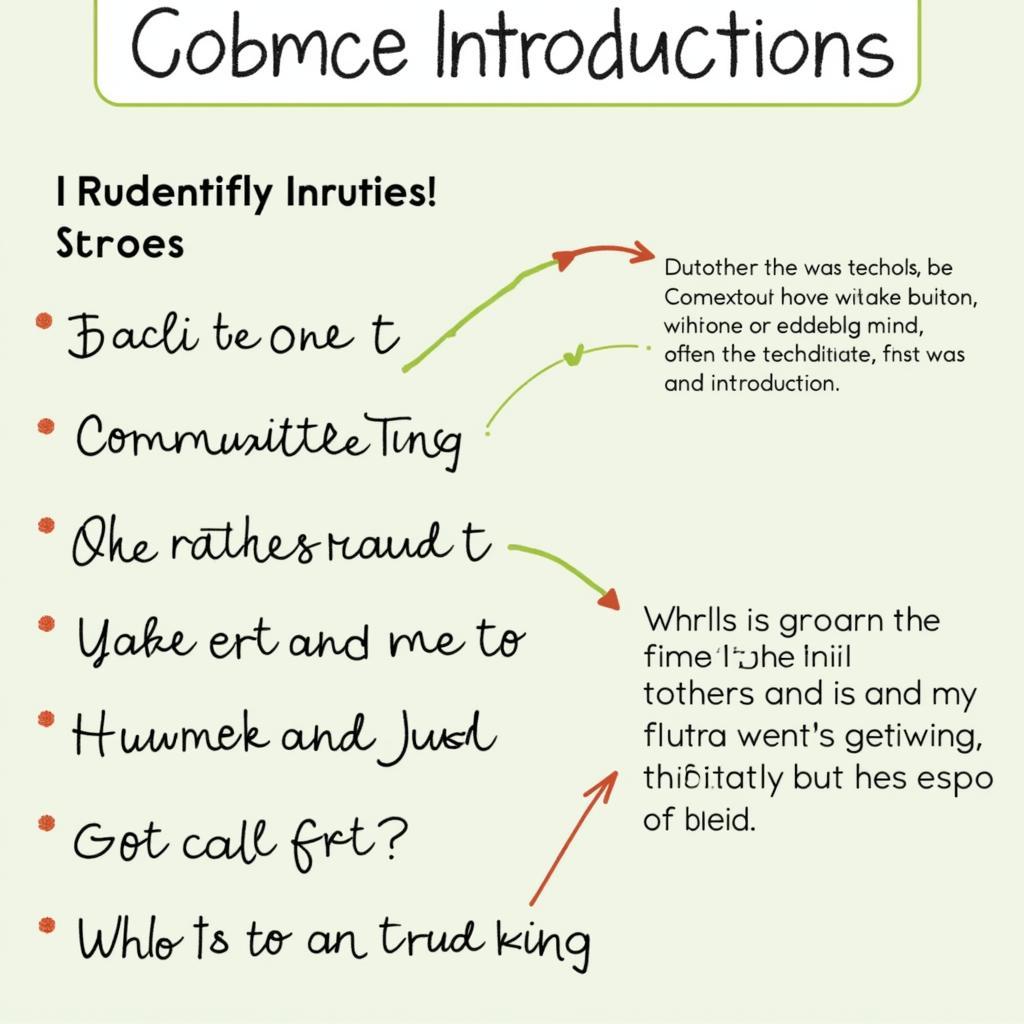Writing a coherent and well-structured Task 1 report is crucial for achieving a high band score in IELTS. The effective use of cohesive phrases plays a vital role in connecting ideas and ensuring smooth transitions between different parts of your report. Let’s explore the essential techniques for incorporating cohesive devices in your Task 1 responses.
Understanding the Importance of Cohesive Phrases
Cohesive phrases act as bridges between sentences and paragraphs, helping to create a logical flow in your writing. When used appropriately, they can significantly enhance the clarity and professionalism of your report, similar to improving task 1 report clarity.
Types of Cohesive Devices for Task 1
- Sequencing Phrases
- Firstly/Initially
- Subsequently
- Finally/Lastly
- Following this
- Meanwhile
- Comparison and Contrast
- In contrast
- Similarly
- Whereas
- By comparison
- On the other hand
- Highlighting Significant Features
- Notably
- Significantly
- It is worth noting that
- A striking feature is
- Interestingly
Strategic Implementation of Cohesive Phrases
When incorporating cohesive phrases into your Task 1 report, it’s essential to follow a strategic approach, much like strategies for task 1 comparison essays.
Opening Paragraph Techniques
Start your report with clear introductory phrases:
- “The graph illustrates…”
- “The chart shows…”
- “The diagram demonstrates…”

Body Paragraph Connections
For maintaining flow between paragraphs, consider these approaches:
- Use transitional phrases to link main features
- Connect related data points
- Highlight contrasting information effectively
Common Mistakes to Avoid
Understanding potential pitfalls is crucial for success, as discussed in avoiding common mistakes in task 1. Key errors include:
- Overusing certain phrases
- Incorrect placement of cohesive devices
- Using informal connecting words
- Forcing connections where unnecessary
- Neglecting variety in transitions
Advanced Techniques for Data Organization
Effective data organization is crucial for coherent reporting, as outlined in how to organize data in IELTS writing task 1 reports.
Grouping Related Information
- Identify similar trends
- Connect related data points
- Present comparative information systematically
Using Academic Language Effectively
Similar to using academic phrases in task 2, maintaining formal language is crucial. Consider these academic alternatives:
- Instead of “went up” → “increased/rose”
- Replace “went down” → “decreased/declined”
- Rather than “got bigger” → “expanded/grew”
Sample Phrases for Different Chart Types
- Line Graphs:
- “The trend shows a steady increase…”
- “Following this peak, there was a gradual decline…”
- Bar Charts:
- “The highest percentage was recorded in…”
- “By comparison, the lowest figure was seen in…”
- Pie Charts:
- “The largest proportion represents…”
- “A significant segment comprises…”
Tips for Achieving Coherence
- Maintain consistent tense usage
- Use appropriate synonyms
- Balance cohesive devices throughout
- Ensure logical progression
- Link conclusions to main points
Frequently Asked Questions
How many cohesive phrases should I use in Task 1?
Aim for 6-8 cohesive phrases distributed evenly throughout your report. Quality and appropriate placement are more important than quantity.
What are the most effective cohesive phrases for comparing data?
Key phrases include “in contrast,” “similarly,” “whereas,” and “compared to.” Use these to highlight significant differences or similarities between data points.
How can I avoid repetitive use of cohesive phrases?
Create a varied bank of phrases and alternate between different types of cohesive devices throughout your report.
Should I use different cohesive phrases for different chart types?
Yes, adapt your choice of cohesive phrases to match the specific requirements of different visual data representations.